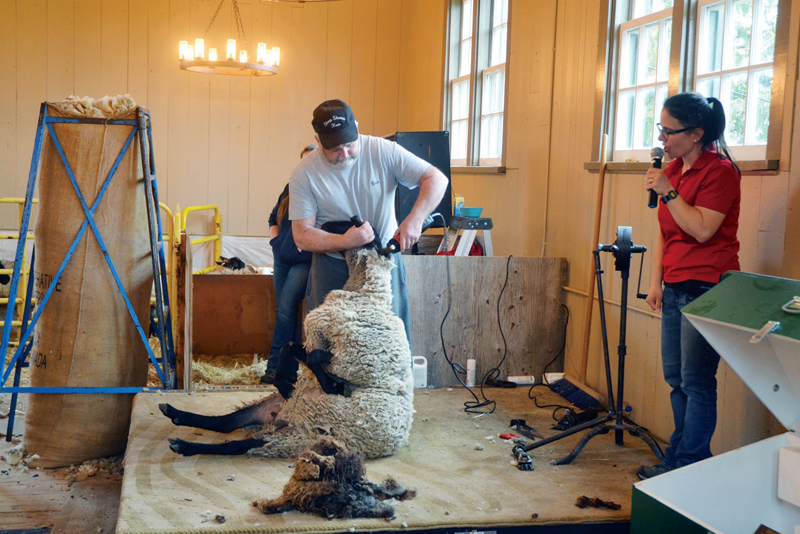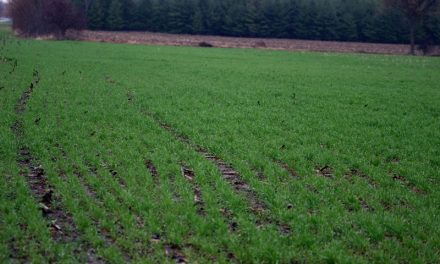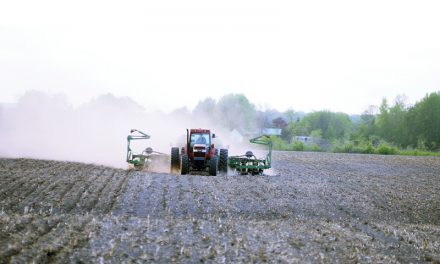A big learning curve
Eastern Ontario sheep shearer Ross Creighton demonstrated how to shear a sheep at the sheep shearing festival in Ottawa on Sat., May 19. With the help of a guide, visitors learned how and why the process is done. Sawyer Helmer photo
by Kalynn Sawyer Helmer
AgriNews Staff Writer
OTTAWA – The Canada Agriculture and Food Museum held their annual sheep shearing festival from May 17 to 20. Thursday and Friday the Museum opened for school and educational trips while Saturday and Sunday were open for the public.
The website explains that at the festival, “visitors of all ages can attend sheep shearing, sheep herding and sheepdog agility demonstrations, as well as meet some alpacas. They can also learn about carding and knitting, all important steps in the transformation of a raw fleece into wool. They can see a craftsman doing traditional finger-weaving or spin the quiz wheel and test their knowledge about fibres from various sources. Visitors can have a taste of goat milk ice cream and enjoy cooking demonstrations that feature sheep and goat cheese.”
Many, if not most of the museum’s visitors do not come from agriculture backgrounds. The festival is a way of bring urban students and residents to experience and see first-hand a piece of Canadian agriculture.
Ellen Morrisson explained: “A lot of people who come, especially if it’s their first time, they’ve never even considered seeing a sheep being sheared or have never even seen a sheep. So there is a big learning curve here but they learn a lot, it’s very exciting.”
Roughly every half hour over the four days, eastern Ontario based sheep shearer Ross Creighton demonstrates how to shear a sheep. He brings his own animals to the demonstrations and laughs about how he is paid to shear his own flock.
Creighton operates a farm in Rosetta with about 100 yules. As for his shearing business, he said he does shearing for clients almost every month. Over the course of the year Creighton shears between 4,000 and 5,000 sheep. With so many sheep and only about three professional sheep shearers in eastern Ontario, Creighton is always busy.
He grew up with sheep, his dad operating a farm. When he was getting started on his own Creighton took a shearing course. The instructor demanded the participants shear with their right hand, an issue for Creighton who is left handed. As such, he can now shear with both hands, a valuable skill when facing squirming sheep. With 40 years of experience in his roster, Creighton said he can do the average sheep in three minutes. The largest flock he’s ever sheared in one go was last year. He did 210 in three days. With so few shearers, Creighton is helping train the next generation and has a young man helping him with the jobs.
His demonstration at the festival included help from a guide who explains what is happening, how Creighton goes about shearing the sheep, why and some general information about sheep and the history of shearing. The guide also explains that most Canadian sheep are bred for meat but their wool is still useful, helping non-agriculture Canadians become familiar with a producer’s process.
Creighton can be found at a number of fairs and shows across eastern Ontario over the summer and has been a regular at the festival since 1996.













